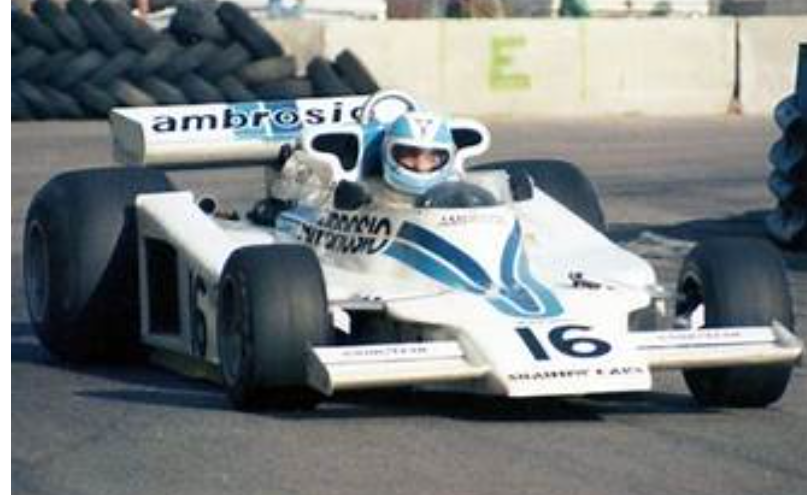The year 1977 marked a pivotal moment in the history of Formula One, as the South African Grand Prix at Kyalami became the stage for one of the most harrowing accidents ever recorded in the sport. Renzo Zorzi, a promising British driver, was at the center of this tragic event, captured on video, forever altering the landscape of Formula One safety. The “Renzo Zorzi Race Accident Video 1977” not only revealed the horrifying nature of the crash but also catalyzed significant changes in safety protocols, ensuring that the lessons learned from this profound tragedy would safeguard the lives of future drivers. In this exploration, we delve into the details of that fateful day, shedding light on the impact of the Renzo Zorzi race accident video and its transformative role in Formula One safety measures.

I. Renzo Zorzi’s Early Life and Racing Career
Renzo Zorzi’s journey into the world of motorsports began in the early 1970s, born in 1949 in Ruthin, Wales. His parents, Jack and Gwyneth Zorzi, likely played a pivotal role in nurturing his racing talents. Zorzi quickly ascended through the ranks of junior racing series, catching the attention of the Token Racing F1 team in 1974. This marked a significant moment as he made his official Formula One debut that year.
Although Zorzi faced challenges in his rookie F1 season with Token Racing, his fortunes improved when he joined the Shadow Racing Cars team in 1975. Notably, he showcased his skills in wet conditions, securing a historic win at the non-championship Race of Champions at Brands Hatch. His switch to the Shadow team in 1976 saw continued improvement, marked by his first podium finish at the Austrian Grand Prix. Zorzi’s promising career trajectory set the stage for what would unfold in the tragic events of 1977.

II. The 1977 South African Grand Prix Crash Video
The 1977 South African Grand Prix was poised to be a pivotal race for Renzo Zorzi. Despite qualifying 15th on the Kyalami circuit, Zorzi displayed his skills by gaining positions in the early laps. However, on lap 22, his race took a tragic turn. Forced to retire due to an issue with his fuel metering unit, Zorzi’s car erupted in flames as he attempted to disconnect his helmet’s oxygen supply.
The chilling Renzo Zorzi 1977 video captures the moment when two brave marshals, including 19-year-old Frederik Jansen van Vuuren, rushed to Zorzi’s aid with fire extinguishers. Tragically, as they reached the car, Zorzi and another driver, Hans-Joachim Stuck, crested a hill on the straight at nearly 170 mph, unaware of the unfolding crisis. The impact resulted in the immediate death of van Vuuren and fatal head injuries for Zorzi.

III. Aftermath and Legacy
The aftermath of the 1977 South African Grand Prix crash was profound. The graphic crash video underscored the urgent need for enhanced safety measures in Formula One. Responding to this tragedy, the FIA implemented crucial reforms, including the mandatory use of fireproof racing suits and helmets for drivers and crew. These changes marked the beginning of a transformative era in F1 safety.
While the crash claimed the lives of Zorzi and van Vuuren, the legacy of Renzo Zorzi endures. As the only Welsh driver to win an F1 race and lead a lap in the Formula One World Championship, Zorzi’s contributions to motorsport are commemorated by the Renzo Zorzi Trophy and a statue in his hometown of Ruthin.
https://www.youtube.com/watch?v=JoCzXn8ZiSU
IV. The Transformation of Formula One Safety
The Renzo Zorzi race accident video, though difficult to watch, played a pivotal role in transforming safety standards in Formula One. The lessons learned from this tragedy have contributed to creating a significantly safer environment for modern F1 drivers. The crash video stands as a solemn reminder of the sacrifices made by Zorzi, van Vuuren, and others, ultimately inspiring life-saving improvements in the sport.
Renzo Zorzi’s daring racing spirit, captured in the video that immortalized his tragic accident, continues to serve as a poignant reminder of the risks inherent in the pursuit of speed. The enduring impact of this event on Formula One safety reflects the sport’s commitment to learning from its history, ensuring that future generations of drivers can compete in a safer and more secure racing environment.
